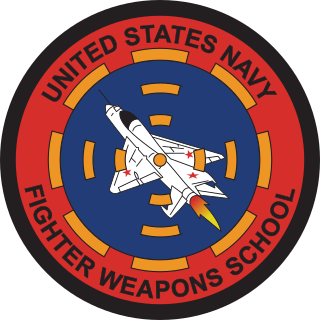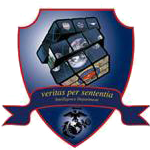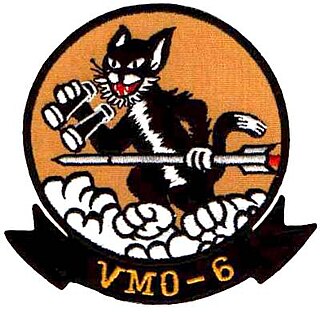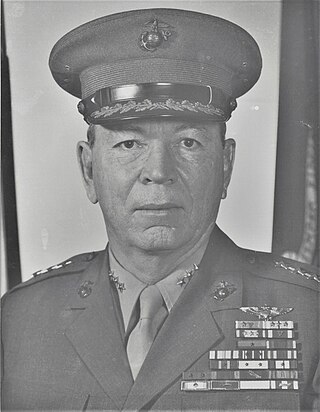
Quantico is a town in Prince William County, Virginia, United States. The population was 480 at the 2010 census. Quantico is approximately 35 miles southwest of Washington, D.C., bordered by the Potomac River to the east and the Quantico Creek to the north. The word Quantico is a corruption of the name of a Doeg village recorded by English colonists as Pamacocack.

Marine Corps Air Station Yuma or MCAS Yuma is a United States Marine Corps air station in Arizona. It is the home of multiple squadrons of F-35B Lightning IIs of the 3rd Marine Aircraft Wing, Marine Aviation Weapons and Tactics Squadron 1 (MAWTS-1), Marine Operational Test and Evaluation Squadron 1 (VMX-1) and Marine Fighter Training Squadron 401 (VMFT-401), an air combat adversary squadron of the 4th Marine Aircraft Wing of the Marine Corps Reserve. It is a designated Superfund site due to a number of soil and groundwater contaminants, including asbestos.

Marine Helicopter Squadron One (HMX-1) is a United States Marine Corps helicopter squadron responsible for the transportation of the president and vice president of the United States, heads of state, Department of Defense officials, and other VIPs as directed by the Marine Corps and White House Military Office. A Marine helicopter with the president aboard uses the call sign "Marine One". Previously, HMX-1 was also tasked with operational test and evaluation (OT&E). This task was reassigned to VMX-1 in Yuma, Arizona; since the contract award of the new presidential helicopter in 2014 to Sikorsky Aircraft, however, HMX-1 has assumed the temporary role of OT&E for this platform, because of its unique nature and mission. The VH-92A first flew in 2017 and became operational in 2024. Nicknamed "Nighthawks", HMX-1 is headquartered at Marine Corps Air Facility Quantico, Virginia, and maintains detachments at Joint Base Anacostia–Bolling in Washington, D.C., and Joint Base Andrews Naval Air Facility in Maryland.

The United States Navy Strike Fighter Tactics Instructor program, more popularly known as Top Gun, is a United States Navy training program that teaches air combat maneuvering tactics and techniques to selected naval aviators and naval flight officers, who return to their operating units as surrogate instructors.

Marine Corps University is a military education university system of the United States Marine Corps. It is part of the Naval University System and accredited by the Commission on Colleges of the Southern Association of Colleges and Schools to award Master's Degrees.

Marine Medium Tiltrotor Squadron 161 (VMM-161) is a United States Marine Corps tiltrotor squadron that operates the MV-22 Osprey. The squadron, known as the "Greyhawks", is based at Marine Corps Air Station Miramar, California and falls under the command of Marine Aircraft Group 16 (MAG-16) and the 3rd Marine Aircraft Wing. The squadron has the distinction of being the first helicopter transport squadron in the world and regularly utilizes the phrase "The First, The Best".

Marine Heavy Helicopter Squadron 361 (HMH-361) is a United States Marine Corps helicopter squadron consisting of CH-53E Super Stallion transport helicopters. The squadron, known as the "Flying Tigers", is based at Marine Corps Air Station Miramar in California, and falls under the command of Marine Aircraft Group 16 (MAG-16) and the 3rd Marine Aircraft Wing.

Marine Aircraft Group 31 (MAG-31) is a United States Marine Corps aviation group based at Marine Corps Air Station Beaufort, South Carolina that is currently composed of two F/A-18C Hornet squadrons, one F/A-18A++ Hornet squadron, two F/A-18D Hornet squadrons, one F-35B Lightning II training squadron, one F-35C Lightning II squadron and an aviation logistics squadron. It falls under the command of the 2nd Marine Aircraft Wing.

The Marine Corps Intelligence is the intelligence arm of the United States Marine Corps (USMC) and an element of the United States Intelligence Community. The Director of Intelligence supervises the Intelligence Department of HQMC and is responsible for policy, plans, programming, budgets, and staff supervision of Intelligence and supporting activities within the U.S. Marine Corps as well as supervising the Marine Corps Intelligence Activity (MCIA). The department supports the Commandant of the Marine Corps (CMC) in his role as a member of the Joint Chiefs of Staff (JCS), represents the service in Joint and Intelligence Community matters, and exercises supervision over the MCIA.

Leatherneck Magazine of the Marines is a magazine for United States Marines.

John Kerry Davis, also known as J.K. Davis, was a United States Marine Corps four-star general. Davis, a Vietnam War veteran and naval aviator, served as the Commanding General of the 3rd Marine Aircraft Wing (1977–1978) and the 1st Marine Aircraft Wing (1978-1978). His final assignment was as the Assistant Commandant of the Marine Corps from July 1, 1983, to June 1, 1986.

Edwin Howard Simmons was a United States Marine Corps brigadier general. He was a career officer who served in combat during three wars — including landing at Inchon and fighting at the Chosin Reservoir in the Korean War. He was renowned as the official Marine Corps historian, being called "the collective memory of the Marine Corps". His 1974 book The United States Marines: A History is a seminal reference text.
The Marine Corps Association is the professional organization for members of the United States Marine Corps and friends of the Corps. It is known for its publications Leatherneck Magazine and Marine Corps Gazette. As of 2009, MCA became part of MCA&F, the Marine Corps Association & Foundation.

Marine Observation Squadron 6 (VMO-6) was an observation squadron of the United States Marine Corps which saw extensive action during the Battle of Okinawa in World War II and the Korean and Vietnam Wars. The squadron was the first Marine Corps helicopter squadron to participate in combat operations when it participated in the Battle of Pusan Perimeter in August 1950. The squadron was decommissioned on 1 January 1977.

General Vernon Edgar Megee was a United States Marine Corps general. He is recognized as a pioneer in the development of close air support for ground combat operations. He served as Assistant Commandant of the Marine Corps from 1956 to 1957; with his final billet from 1957 to 1959 as commanding general, Fleet Marine Force, Pacific. When he retired from the Marine Corps, after 40 years of active duty service, he received a promotion to 4-star rank.

Lieutenant General Thomas H. Miller, was a United States Marine Corps Naval Aviator and test pilot. Miller saw active combat in World War II, Korea, and Vietnam. As a test pilot, he set a World Speed Record in an F4H-1 (F4B) Phantom. He was the first American to fly the Marine Corps' new AV-8A Harrier jet, capable of vertical takeoff and landing, orchestrating its procurement for the Marine Corps and oversee development of the concept during his career. For this effort, Miller was known as "the father of STOVL aviation in the USMC."

Eugene R. Brady (1928-2011) was a United States Marine Corps officer and naval aviator who was the recipient of the Navy Cross and a later Silver Star for his heroic actions during two separate medevac missions taking wounded Marines from a landing zone while under fire during the Vietnam War. At the time of these awards, he was serving as the commanding officer of HMM-364, The Purple Foxes. He began his career as a fixed wing pilot and saw service in the Korean War with VMF-311. He did not transition to flying helicopters until 1968. During the course of his career he commanded four different squadrons, Marine Corps Air Station Tustin and Marine Aircraft Group 16. Colonel Brady retired from the Marine Corps in 1980 after more than 34 years of service.

The Marine Corps Installations Command (MCICOM) was created on October 1, 2011 to oversee U.S. Marine Corps installations through direct oversight, policy creation and coordination, and resource prioritization. MCICOM is currently commanded by Major General David W. Maxwell.

Henry Williams Hise was a United States Marine Corps Brigadier General. Hise served in World War II, Korea and Vietnam as a Marine Corps aviator, completing five combat tours. He was awarded the Distinguished Flying Cross for his actions during the Guadalcanal Campaign in World War II.
Hal Wellman Vincent was a naval aviator in the United States Marine Corps who retired at the rank of major general. A veteran of the Vietnam War, he commanded at the squadron, group and wing level during his career. He flew more than 10,000 hours in over 165 different aircraft and was the first Marine Aviator to fly Mach 2.0.

















